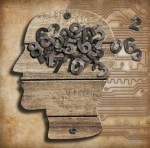 Alzheimer’s has definitely become one of the most studied diseases of the last decade. The brain-wasting condition seems to affect an ever increasing number of people. Today, there are an estimated five million people living with Alzheimer’s. That number could balloon to more than 13 million by 2050 if the current trend continues.
Alzheimer’s has definitely become one of the most studied diseases of the last decade. The brain-wasting condition seems to affect an ever increasing number of people. Today, there are an estimated five million people living with Alzheimer’s. That number could balloon to more than 13 million by 2050 if the current trend continues.
Not only do Alzheimer’s patients live a life that is mentally greatly compromised, most will also require full time physical care as well. The amount of resources, money, and time that is required to care for all of us who may be inflicted with Alzheimer’s in the coming years is staggering.
Doctors and other scientists have developed memory tests, physical exams, and health screens meant to identify the signs that someone may be suffering from Alzheimer’s. However, these tests are not always accurate and don’t always work on an individual basis for each patient. There is still no way for doctors to diagnose the disease definitively, and certainly not in its earliest stages.
That might all be changing. Researchers at the INRS—a university dedicated to medical research and encompassing four centers in Quebec, Canada—have identified a new way to potentially diagnose Alzheimer’s as well as determine its severity.
The French Canadian research team built on previous research conducted about the progression of Alzheimer’s. Scientists know that specific areas in the cerebral cortex—the largest area of the brain colloquially referred to as “grey matter” and that governs the higher functions—change for the worse when someone shows signs of Alzheimer’s. The research team used these changes in the biological functioning of the brain and compared them to the EEGs of 22 people with moderate Alzheimer’s, 27 people with mild Alzheimer’s, and 27 healthy people.
The research team found some statistically significant differences amongst the three groups. They developed an algorithm that helped to dissect brain waves at different frequencies. Those with moderate Alzheimer’s showed different brain wave patterns than those with a mild case of the disease. The healthy participants showed another, uniquely distinct set of brain wave patterns. The researchers were able to determine changes in brain temporal dynamics of the patients with Alzheimer’s.
The INRS researchers have made the algorithm public in hopes of attracting more answers in the search to find a truly reliable tool for diagnosing Alzheimer’s. It could be that other research teams are using the algorithm right now in innovative ways and that the medical community will soon learn it now has a way to identify Alzheimer’s in its earliest stages.
A diagnostic tool that uses brain wave imagery would be hailed by the medical community and the public alike as a non-invasive, objective and hopefully lower-cost diagnostic tool.
Source(s) for Today’s Article:
“Toward an early diagnostic tool for Alzheimer’s disease,” Science Daily web site, August 30, 2013; http://www.sciencedaily.com/releases/2013/08/130829155852.htm?utm_source=feedburner&utm_medium=email&utm_campaign=Feed%3A+sciencedaily%2Ftop_news%2Ftop_health+%28ScienceDaily%3A+Top+News+–+Top+Health%29, last accessed September 1, 2013.
Fraga, F.J., et al., “Characterizing Alzheimer’s Disease Severity via Resting-Awake EEG Amplitude Modulation Analysis,” PLoS ONE 2013; 8 (8): e72240.
